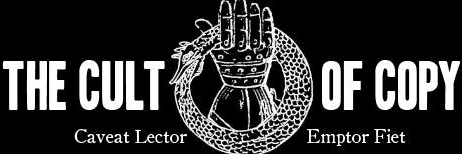“Great advertising, in and of itself, becomes a benefit of the product.” – George Lois, Born Jun. 26, 1932.
What old George is saying here is that objects (like products, for example) all have a story.
They just do. Someone invented those products, for some purpose, to solve some problem, to sell to some person, for some reason. That's a story.
Is it a good story? That's your job. To yank a GOOD story out of the facts and make it an asset to the seller.
Because a GOOD story can become so associated with the object that it is about, that ownership of the object essentially includes ownership of the story.
The buyer can now ADOPT that story for themselves. Because they bought the product that TRANSFORMS them and IDENTIFIES them as a stronger, masculine man, or a dutiful well-loved housekeeper, or a daring, brilliant entrepreneur…
The story creates the REAL value.
Art is pretty, but the value of art is determined by the story of it – who made it, and when, and why, and how.
People choose cars and clothes because of the story connected with those things – the story about the driver or wearer that the car/clothes will help them tell to the world around them.
Even a shell from a beach, collected during a walk with a summer love – found in a drawer a decade later – may be potently infected with the stuff of memory.
Even if that story is only known by one person, the object becomes a token for the story. It's a trigger for a memory and the emotions associated with it.
And that's all an advertisement is – a memory someone else wrote, that a prospect accepts as their own.
Repeat that to yourself – an advertisement is an artificial memory… Maybe of something that hasn't happened yet. But will. It FEELS like a story they want to be their very own to tell.
The product just helps them prove the tale.
So how can you describe an object – your product – so that there is a story wrapped up around it?
A story about who made it, and why, and how.
About who it's for, and who it isn't for.
About what other people see in it, and in those who have it.
This is the secret of creating covetousness, and craving. It's not just an item they need for what it is or does. They need it because it's a missing part of their story. They feel incomplete until they own it.
And once they do, they are whole, and returned to their true selves. Their story is theirs once again, and can be retold…
Which will only bring more eager buyers back to you.

